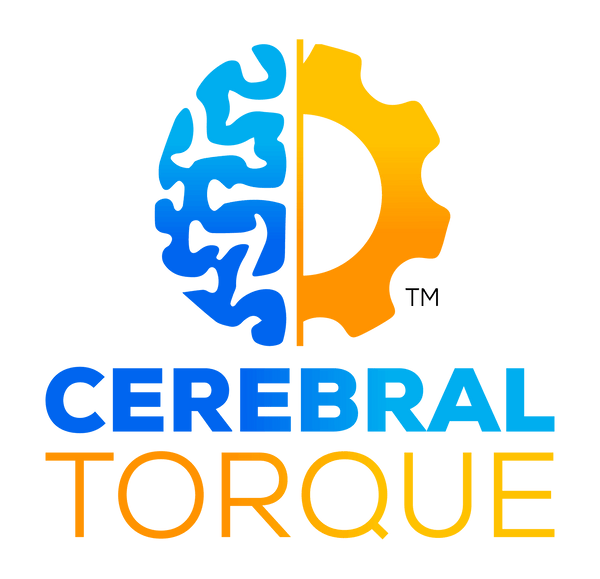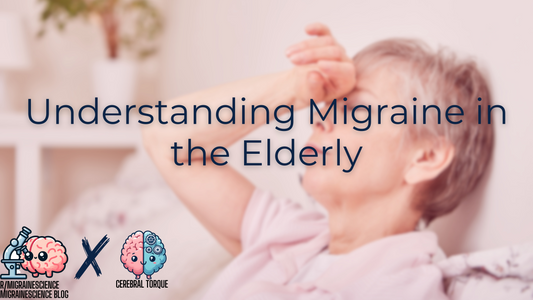Analysis of new study on IV dihydroergotamine (DHE) use in those with elevated cardiovascular risk by the Jefferson Headache Center
Cerebral TorqueShare
A new retrospective study published in Headache: The Journal of Head and Face Pain found that IV dihydroergotamine (DHE) was safe, tolerable, and effective for the treatment of refractory chronic migraine in patients, including those with elevated cardiovascular risk.
To completely understand the significance of this study, let’s sidetrack a bit and talk about DHE.
DHE has been used to effectively treat migraine headaches for decades (over 70 years!) and is one of the oldest migraine medications. DHE works by binding to multiple receptors involved in migraine pathology (like 5-HT1B, 5-HT1D, 5-HT1F, adrenergic, cholinergic, and dopaminergic receptors) and provides rapid, sustained relief. However, DHE's cardiovascular safety profile has been a longstanding concern.
Intravenous (IV) administration of DHE achieves therapeutic plasma levels rapidly, but also results in high peak concentrations that commonly cause nausea and vomiting. These high peak levels may also be responsible for DHE's cardiovascular side effects like increased blood pressure, pulmonary arterial hypertension (which causes further strain on the heart as now the right ventricle must pump against a higher resistance), arterial vasoconstriction (including coronary arteries due to binding to 5-HT1B and alpha-adrenergic receptors), etc.
These possible adverse effects have limited the use of DHE- especially in patients with elevated cardiovascular risk. This is where this study comes in.
This study was conducted at the Jefferson Headache Center (JHC) inpatient unit. They extracted data from medical records (it was a retrospective study as mentioned earlier) of 347 patients who received IV DHE. Patient medical record data included demographics, medical history, atherosclerotic cardiovascular disease (ASCVD) risk scores, pain ratings, DHE dosing, adverse events, and ECG changes.
Another quick sidetrack, ASCVD risk is done with a calculation that you can see here: https://www.mdcalc.com/calc/3398/ascvd-atherosclerotic-cardiovascular-disease-2013-risk-calculator-aha-acc
As you can see, the ASCVD risk calculator depends on variables including age, diagnosis of diabetes, sex, smoking status, total cholesterol, HDL cholesterol, systolic blood pressure, treatment for hypertension, and race to provide a 10-year risk for atherosclerotic vascular disease.
Patients were stratified into low (<5%) and elevated (≥5%) 10-year atherosclerotic cardiovascular disease risk groups using the ASCVD risk calculator. Those in the elevated risk group had comorbidities like diabetes and hyperlipidemia.
The primary outcomes were tolerability and effectiveness of IV DHE. Tolerability was assessed via DHE dose/duration, need for additional medications, ECG changes, and adverse events. Effectiveness was evaluated by change in numeric rating scale (NRS) pain scores.
The JHC gave the same INITIAL dose of DHE to the elevated and low risk groups, but limited the uptitration of the doses more in the elevated risk groups and the final doses were less in the elevated risk groups vs the low risk groups. So, there was more caution in regard to DHE dose escalation in those with a higher risk of cardiovascular disease.
There was no significant cardiovascular adverse events or ECG changes in either risk group. Both groups also experienced significant pain reduction with nearly half achieving headache freedom at discharge. However, the elevated risk group had less pronounced pain improvement compared to low risk patients likely due to the lower DHE doses we discussed earlier.
This study was great because it studied a population (with a relatively large sample size) with high disability due to migraine disease. Remember, these patients were inpatient for 5-7 days for the IV DHE treatment protocol. Furthermore, the correct IV DHE protocol was used so this treatment plan can be replicated and, therefore, provides a guide for clinical practice.
With that said, there are obvious limitations to the study. For one, it was a retrospective study, which means there was no randomization or blinding. Furthermore, there was no control group that included patients that did not receive IV DHE. This does not mean that the study was not good. It is a great study, but physicians must follow the standard of care and cannot withhold a known effective medication for the purposes of a study.
More importantly, the study excluded patients with very high cardiovascular risks as they were not offered IV DHE. Therefore, we cannot draw a conclusion as to the use of IV DHE in this patient subset and we must understand that the safety data is incomplete.
Finally, concomitant medications were used with IV DHE so it is impossible to isolate the effects of DHE alone. Again, standard of care is necessary even during a study.
This study does provide useful evidence to support the safety and effectiveness of protocolized IV DHE for refractory migraine. While promising, the data are not definitive due to limitations inherent to the retrospective design and the requirement of standard of care.
Larger trials trials with control groups, standardized treatment protocols (IV DHE dosing and concomitant medications were dependent upon the provider), and inclusion of high-risk patients are still needed to firmly establish the safety of IV DHE in migraine treatment. Nonetheless, this study offers real-world insights to guide clinical practice. IV DHE, as part of a comprehensive treatment protocol, may be a safe and viable option even in migraine patients with elevated cardiovascular risk factors.

